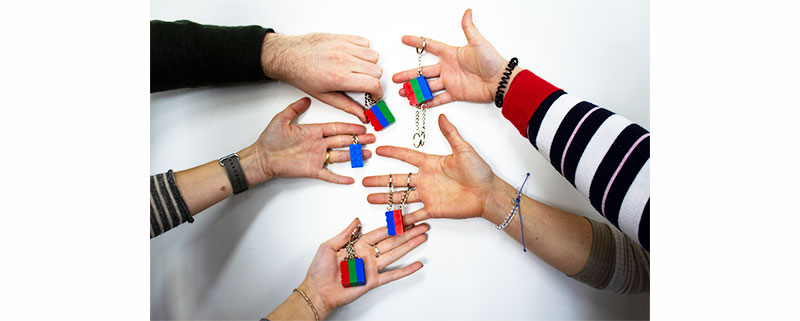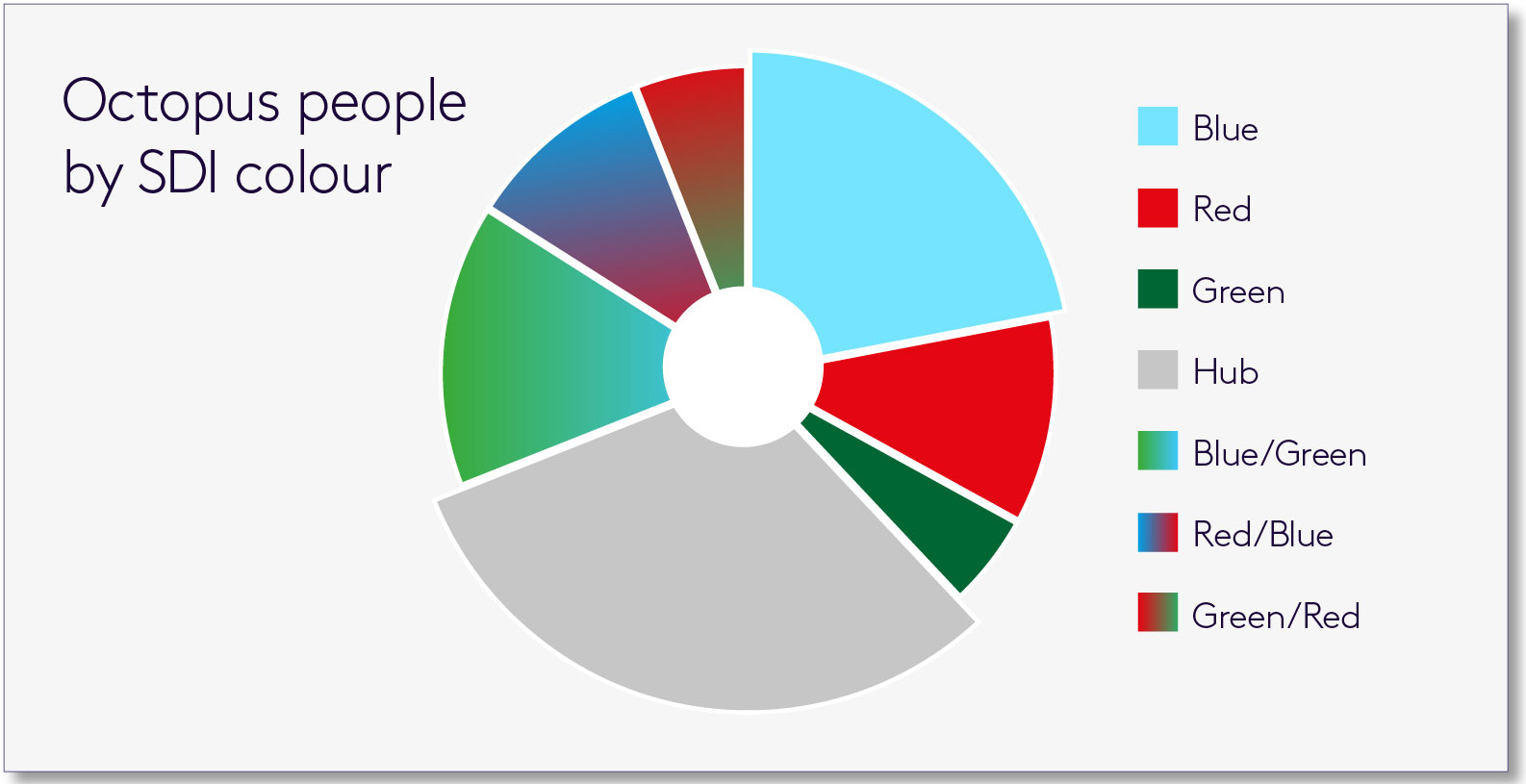Ever wondered why some people get along better with work colleagues than others? Or why some people find themselves in conflict at work? At Octopus, we’re committed to helping our people get a stronger understanding of what motivates them, and the people around them. And it’s leading to much more productive working relationships.
We spend a lot of time encouraging the people who work here to not just focus on ‘what’ they do at work, but ‘how’ they do it. A large part of the ‘how’ aspect centres on how people interact with one another at work.
Our differences can impact our interactions
As the modern workplace has become more closely connected, people’s interactions with one another have become increasingly important. It’s no longer acceptable to be good at your job if you’re a horrible person to work with. In today’s workforce, you have to be mindful of how you come across to others and be able to adapt your communication style to suit the needs of the people around you.
In a nutshell, today, much of your success at work depends on the relationships you build with your colleagues and stakeholders. But every day we interact with people who are motivated differently than we are. This can present a number of challenges, and sometimes even conflicts. But if you want to get to know other people better, you need to start by really getting to know yourself.
Back in 2014, we piloted a new training course to Octopus employees. It’s called the Strength Deployment Inventory ® (SDI) and it’s been proven so useful we’ve applied it across all areas of Octopus.
What is the SDI?
The SDI® is a powerful and effective tool for understanding the motives that drive our behaviours. Most importantly, by providing critical insights into a person’s beliefs and values, it helps leaders and teams gain a better understanding of how to influence people who think, behave and communicate differently.
People who take the course are asked a number of questions that focus on three key motivators:
- Wanting to help others (People)
- Wanting to achieve results (Performance)
- Wanting to establish order (Process)
These three areas drive each of us, creating the behaviours that we display. According to their answers, users will be able to see where they sit on the SDI chart, not only when things are going well, but also when they are faced with conflict. Conflict and motivational values are closely related, because people are more likely to go into conflict over things that are important to them.
Each individual’s motivational value system is represented by a dot on a colour-coded triangle:
-
-
- People in the Blue category are altruistic and nurturing towards others
- People in the Red category are assertive and directing – they like to accomplish goals
- People in the Green category are analytic and autonomising – they want to see meaningful order
- People in the Hub category are flexible and cohering – motivated by the need for flexibility and concern for the welfare of the group
- People in the Red-Blue category are assertive and nurturing
- People in the Green-Red category are judicious and competing – providing rational leadership
- People in the Blue-Green category are cautious and supporting
-
The colour coding makes it easier for people to understand the results and discuss them with others. Establishing whether the person you’re communicating with is a ‘Red’ or a ‘Blue’, or a ‘Green’ or a ‘hub’ helps you to connect with others on a deeper level, and encourages you to think about the way you want to be perceived, as well as how other people could be perceiving you.

Sometimes psychometric tests in the workplace are greeted with suspicion, because the results on paper don’t reflect what the individual believes about themselves. But so far, we’ve found that most people can see their own behaviours reflected in the data, and they agree with the ‘colour’ assigned to them. But perhaps most significantly, people who complete the SDI training don’t feel constrained or pigeon-holed by the results, because SDI allows for the reality that people are all different and can react differently even when faced with very similar situations.
Discovering what matters to people
While many tools focus on what we do, the SDI goes deeper and helps us understand why we and others behave the way we do. This helps us recognise those times when we need to use different behaviours based on the conditions, our motives, and the motives that are driving others. By helping people understand what matters to people and why, and by providing a safe, common language for discussing tough issues, the SDI provides a non-threatening way to deal with conflict before it begins.
Improving interactions within Octopus
We always want Octopus people to be the best version of themselves. We’ve found that giving people access to SDI, both for themselves and the scores of the people around them, has been a huge benefit. We regularly have teams asking us to create their team triangles to use in team build sessions and meetings, which is great as people actively enjoy using the results.
How have Octopus people scored?
Of the 576 people working at Octopus who have taken the SDI training and been given their test scores, the results are as follows:
-
-
- 126 people scored in the Blue category (22% of our workforce)
- 64 people scored in the Red category (11% of our workforce)
- Just 31 people scored in the Green category (5% of our workforce)
- 177 people scored in the Hub category (31% of our workforce)
- 86 people scored in the Blue/Green category (15% of our workforce)
- 60 people scored in the Red/Blue category (10% of our workforce)
- 32 people scored in the Green/Red category (6% of our workforce)
-

The SDI training at Octopus has now become a firm part of our culture. Everyone who participates in the training day gets their own Lego keyring, revealing the colour or colours that motivate them. These have proven to be a great conversation starter, particularly when someone’s colour challenges other people’s preconceptions.
SDI terminology has even become a part of our everyday language. If you tell someone in a meeting that you’re a ‘Red’ or a ‘Blue’, they’ll know exactly what you mean. Across the different Octopus businesses, you can hear examples of how SDI has been leading to higher quality conversations and greater understanding between people who might otherwise have found themselves on different wavelengths. We think that says a lot about how Octopus people have embraced this new way of thinking, and committed themselves to understanding more about themselves and the people around them.
IMPORTANT INFORMATION: SDI, Strength Deployment Inventory, Motivational Value System, Conflict Sequence, the color-coding and related descriptions are registered trademarks, copyrights of Personal Strengths Publishing, Inc., Carlsbad, CA. Used with permission. No further duplication, by any means, is permitted.


